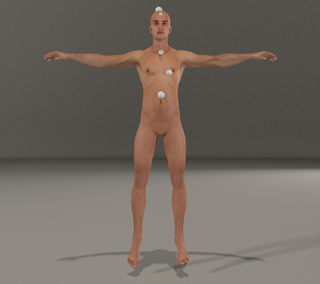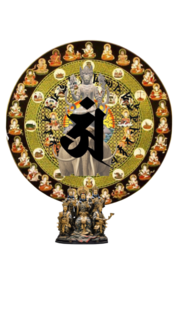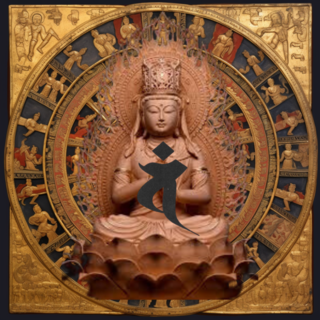
1. �ߑ��̋���: ���o�x�@�Œm�鐬���̔閧
2. �m�E��E�ӂ̒��a: �ߑ��̎��o�x�C�s�@���
3. �|�p�I�ȐS�A���x�Ȉӎu: ���o�x�ň�ރo�����X�̖��@
1. �ߑ��͎��o�x�𐬕��@�Ƃ��Đ����A�O�o�x�E��@�o�x�E���i���x�E��o�x�E��o�x�E��o�x�E�̊o�x�̎��̏C�s�@����������B
2. ���o�x�̏C�s�ɂ��A�������ʁA���ߊ܉ʁA�z�Ɋ܉ʁA�{�ɕS�ʂ�������Ƃ��ꂽ�B
3. �ߑ��̐����@�͎��ȎO�\�����i���琬�藧���A���̒��Ŏ��o�x�͏d�v�ȏC�s�@�Ƃ��ꂽ�B
4. �����@�ɂ����āA���o�x�̉���͊O���̏o�Ƃ̎���ɑ���ߑ��̈�����z���Ɋ�Â����̂ƍl������B
5. �ߑ��͒�q�ɑ��āA���Ȗڂ̒�����I��I�ɏC�s���w�����A�قȂ�C�s�@�����l�Ȃ��̂����邽�߁A��̓I�ȏC�s���e��I�ʂ����Ɛ��������B
6. ���o�x�̏C�s�́A�O�o�x�̋������ς̑̓����܂݁A�m�E��E�ӂ̐��_��p���ύt������g���[�j���O�Ƃ��Đ�������Ă���B
7. �O�o�x�̏C�s�ɂ́A�_��I�ȗ͂����邽�߂ɃN���_���j�[�E���K�̗v�f���܂܂�Ă���B
8. ��ς̑̓��ɂ��A�u�l�O���@�v�̏C�s�����o�x�ɑg�ݍ��܂�A���@�̎����≏�N�̖@�𖾂炩�ɂ���Əq�ׂ��Ă���B
�ߑ��́A�u���o�x�v�������M�̐����@�ł���Ƃ���������āA�O�o�x�E��@�o�x�E���i���x�E�f���o�x�E��o�x�E��o�x�E�̊o�x�̎��̏C�s�@���������ɂȂ����B�@�@
�@�����Ăł��̎��o�x���C�s����A�������ʁA���ߊ܉ʁA�z�Ɋ܉ʁA�{�ɕS�ʂ�������Ɖ������ꂽ���ŁA���ߊ܉ʂɂ���̟��ς̓�����������Ƃ��킵���������ɂȂ�ꂽ�̂ł������B
�@�ߑ��̐����@�́A�O�ɂׂ̂܂����悤�ɁA���ȎO�\�����i�Ƃ����āA�`���ȖځA�O�\����ނ̃J���L���������琬�藧���Ă��܂��B���Ȃ킿�A�l�O���@�A�l���Ζ@�A�B�l�_���@�A�܍��@�A�ܗ��@�A���o���@�A�������ł����@�@�@�@�@�@�@�@�@
�@�����̂����̎��o�x�@�ɂ��āA������ꂽ���̂ł��B
�@�����@�ɂ��Ď��₵���O���̏o�ƂɁA�ߑ����Ȃ��A���Ȗڂ̒��̈�ł��鎵�o�x�ɂ�����������̂��Ɛ\���܂��ƁA����͂킽�����̑̌�����̐����ł����A���̈ٔ�u�������ߑ���
����q�ƂȂ����Đ����@���C�s����Ƃ�����A���o�x�̏C�s����Ԃ悢�ǂ��l���ɂȂ������炾���v���x���B
�@�Ƃ����̂́A�R�ߑ��̐����@�́A���ȖڎO�i����̏C�s��S�����Ȃ���Ȃ�Ȃ��ǂ��@�ł͂Ȃ��̂ł��B���Ȗڂ̒��́A��Ȗڈʂ��������킯�ł��B�Ƃ����̂́A���Ȗڂ̏C�s�@�̒��ɂ̓N���Ȃ��悤�ȏC�s�@���A�_�u�ē����Ă���܂��B����ŁA�ߑ��́A�f����q�̈�����
�݂Ă����Ȗڂ̒�����A�����܂��͂��̏C�s������A���܂��͂���Ƃ���̏C�s�@���悢�A�Ƃ����悤�ɑI�ʂ���Ă��������̂ł��낤�Ǝv���܂��B�B���ɂ́A�Ȗڂɂɒp�܂킸�A��O�\����̏C�s�@�̒����玩�R�ɂ���������яo���āA�C�s�҂ɉۂ������̂Ǝv���܂��B�@
�@�����ŁA���̎��o�x�̏C�s�@�Ƃ����̂��A�ǂ�Ȃ��̂ł��邩/
�O�͂��悭���ăo�����X�������g�m�I�ɂ����ɍ��x�ŁA��ʂɂ����Ă��A���������䂽���ł���Ƃ����悤�ɁA�|�p�ʂȂǂł��悭�������邱�Ƃ��ł���B��I�ȏ�̂Ȃ��ЂƂƂ����̂́A���������ɂȁf��₷���킯�ł��B�f�|�p�I�Ȃ��Ƃ́A�Ȃɂ��킩��Ȃ��A�͂Ȃ������Ă������Ƃ��������낭�Ȃ��A�V���������������āA�j�R���Ƃ����Ȃ��B�����������V�������A�O�����炢�������}�ɏB���o�āA�u�����A�����������̂��v�Ȃ�āi�j�A���ꂶ�Ⴀ���͂Ȃ��ɂȂ��ł���_�B�B
�@�ӎu���悢�̂͂�������������ǂ��A���ꂪ��łɂȂ��Ă��܂��̂ł͂����Ȃ��B
�@������A�m�E��E�ӂ̐��_��p���A���ɋ������A�����߂�Ƃ����P��������B�����Ă��̂�����ɉE�������Ȃ��Ƃ������ƁB���ꂪ�܂����ł��B�������A���ꂾ������Ȃ��B
�@�O���̂��̗̂͂��A�_��I�ɂ܂ŋ�������B��_�ɏW�������Ƃ��A����قǂ̗͂��o���B�ł�����A���̔O�o�x�̏C�s�ɂ́A�N���_���j�[�E�R���g�K�̏C�s������킯�ł�.�B�@�@�@�@�@
�@���Ɂu��ρv��̓�����B�ł�����A���̎��o�x�ɂ́A�u�l�O���@�v�̏C�s�������Ă���B
���̋�ς̑̓��ɂ��A���@�̎������킩��悤�ɂȂ��܂��B�܂�A�u���N�̖@�v��@���Ɂe���Ƃ邱�ƂɂȂ�Ǝv���܂��B
�@���̔O�o�x���A���o�x�@�̒��́A�ڋʂƂ����Ă悢�ł��傤�B����A�O�\�����i�̒��ł��A���\�I�ȏC�s�@�ł��B�@�@�@�@�@�@�@�@�@�@�@�@�@�@�@�@�@�@�@�@�@�@�@�@�@�@�@�@�@�@�@�@
1. Shakyamuni's teachings: The secret to becoming a Buddha through the Seven Awakening Dharma
2. Harmony of knowledge, emotion, and will: Explanation of Shakyamuni Buddha's training method for the Seven Awakenings
3. Artistic mind, strong will: The magic of balance cultivated through the Seven Gakushu
1. Shakyamuni Buddha preached the Seven Gakusho as the method of attaining Buddhahood, and explained the seven training methods of Nen Gakusho, Shoho Gakusho, Shojin Gakusho, Ki Gakusho, Kari Gakusho, Jo Gakusho, and Sakugakusho.
2. It was said that through the practice of the seven enlightenments, one could obtain Arhat, Ana, Suda, and Suda.
3. Shakyamuni Buddha's method of attaining Buddhahood consisted of seven disciplines and thirty-seven practices, and among these, the Seven Gakushu were considered important training methods.
4. In the Dharma for attaining Buddhahood, the explanation of the Seven Gakushu is considered to be based on Shakyamuni's connection and considerations regarding the question of the exorcism.
5.Shakyamuni taught his disciples selective training from among the seven subjects, and since some of the different training methods were similar, it is assumed that he selected the specific training content.
6. The training of the Seven Gakushu is described as training to balance the mental functions of knowledge, emotion, and will, including strengthening the mind sense and mastering the idea of emptiness.
7. The practice of Nen Kakusho includes elements of Kundalini Yoga to unleash mystical powers.
8. It is said that by mastering the concept of emptiness, the training of the ``Four Mind Treatment Methods'' will be incorporated into the Seven Gakkushi, and will clarify the reality of various dharmas and the law of dependent origination.
Shakyamuni Buddha said that the ``Seven Gakushu'' are the way to attain Buddhahood, and he said that the ``Seven Gakusho'' are the Dharma for attaining Buddhahood. He taught one method of training.
He was the king who explained that if one practiced these seven enlightenments, one would obtain Arhat, Anana, Sida, and Sudha Hyaku. He taught me in detail that there is someone.
As mentioned earlier, Shakyamuni Buddha's method of attaining Buddhahood consists of seven subjects and thirty-seven types of curriculum, called the Seven Subjects and Thirty-Seven Ways. In other words, the Four Thought Treatment Methods, the Four True Work Methods. These are the Four Divine Foot Law, the Five Root Law, the Five Power Law, the Seven Awakening Grammar, and the Eightfold Path��
This is an explanation of Ukouchi's Shichikakusho.
Why did Shakyamuni explain the Seven Awakenings, one of the Seven Subjects, to a monk who asked him about the Dharma for attaining Buddhahood?This is my guess based on my own experience, but I believe that this different bhikkhu If Buddha's
If you were to become a disciple and practice the Dharma for attaining Buddhahood, I believe that it is because you believe that the training of the Seven Awakenings is the second best.
This is because Shakyamuni Buddha's method of attaining Buddhahood is not his, as it requires you to do all seven subjects and seven kinds of training packages. All you have to do is do two of the seven subjects. This is because the training methods for the seven subjects contain many similar training methods. Therefore, the Buddha said, ``The fate of his disciples
It seems that out of the seven subjects, the subjects were selected and given, such as y, you should do this training, and you should practice this and that. . At times, it seems that he chose some of the 137 types of training methods and imposed them on his practitioners, without being ashamed of the subject.
So, what is this Shichikakushu training method?
He possesses strong psychokinesis and balance, and is also highly intellectually advanced.He is also emotionally rich, and can be well understood in terms of art. People who are emotionally devoid of compassion tend to become apathetic. 'I don't know anything about artistic things, I don't find the stories interesting at all, I don't even smile when I tell a joke. About three days later, I suddenly laughed at the scene I heard today.If I came out and said, ``Oh, that's right, that's what I said,'' (lol), then that wouldn't be a story. .
It's fine to have a strong will, but it shouldn't turn into stubbornness.
That's why we greatly strengthen the mental functions of knowledge, emotion, and will, and train ourselves to become eight-minded. And don't lean towards either of them. This is the first thing. But that's not all.
It mysteriously strengthens the power of thought itself. When concentrated on one point, it generates enough power to start a fire. Therefore, the practice of kundalini and yotoga is included in this practice of nen-gakusho.
Next, learn how to see the sky. Therefore, this Seven Gakkushi includes the training of the ``Four Thought Treatment Methods''.
By acquiring this sense of emptiness, you will be able to understand the reality of various laws. In other words, I believe we will truly understand the law of dependent origination.
It can be said that this Nen Gakusho is the highlight of the Seven Gakusho. No, it is the most representative training method among the 37 Ways.
http://cyber-price.com/buddha/
Buddha�@ Japan�@Journal
Buddha Japan journal
���{�̕����M���܂�Send Japanese Buddhis
����@���̒q�d��\�������u�����E�v .���� "Kongokai" expressing the wisdom of Dainichi Nyorai.Ichiinkai
�ّ��E��䶗��@������������ Womb Realm Mandala Taizokai
�ґz��cyber--price
Buddha Japan journal
���{�̕����M���܂�Send Japanese Buddhis 2
�^���w
�y���̃J�e�S���[�̍ŐV�L���z
-
no image
-
no image






